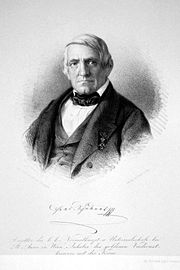Design
Design
Personality
Chart Properties
Your Cross represents the specific theme of your life. This cross embodies your unique potential & the lessons you're here to learn, providing a roadmap to fulfilling your life purpose.
We use the UTC birth time and date to do the calculations required to generate your Human Design chart.
Buy Tokens
Pay as you use, no expiry and no subscription required.Prompt Ideas
Get inspired with some epic prompt ideas.Caspar David Friedrich's Biography
German Romantic landscape painter, generally considered the most important German artist of his generation. He is best known for his mid-period allegorical landscapes which typically feature contemplative figures silhouetted against night skies, morning mists, barren trees or Gothic ruins.
Caspar David was familiar with death from an early age. His mother, Sophie Dorothea Bechly, died in 1781 when he was just seven. A year later, his sister Elisabeth died, while a second sister, Maria, succumbed to typhus in 1791. Arguably the greatest tragedy of his childhood was the 1787 death of his brother Johann Christoffer: at the age of thirteen, Caspar David witnessed his younger brother fall through the ice of a frozen lake and drown. Some accounts suggest that Johann Christoffer perished while trying to rescue Caspar David, who was also in danger on the ice.
On January 21, 1818, Friedrich married Caroline Bommer, the twenty-five-year-old daughter of a dyer from Dresden. The couple had three children, with their first, Emma, arriving in 1820.
Friedrich was acquainted with Philipp Otto Runge (1777–1810), another leading German painter of the Romantic period.
Friedrich’s reputation steadily declined over the final fifteen years of his life. As the ideals of early Romanticism passed from fashion, he came to be viewed as an eccentric and melancholy character, out of touch with the times. Gradually his patrons fell away. By 1820, he was living as a recluse and was described by friends as the “most solitary of the solitary”. Towards the end of his life he lived in relative poverty and was increasingly dependent on the charity of friends. He became isolated and spent long periods of the day and night walking alone through woods and fields, often beginning his strolls before sunrise.
In June 1835, Friedrich suffered his first stroke, which left him with minor limb paralysis and greatly reduced his ability to paint. As a result he was unable to work in oil; instead he was limited to watercolour, sepia and reworking older compositions. When Friedrich died in May 1840, his passing was little noticed within the artistic community.
Link to Wikipedia biography
Your Cross represents the specific theme of your life. This cross embodies your unique potential & the lessons you're here to learn, providing a roadmap to fulfilling your life purpose.
We use the UTC birth time and date to do the calculations required to generate your Human Design chart.







